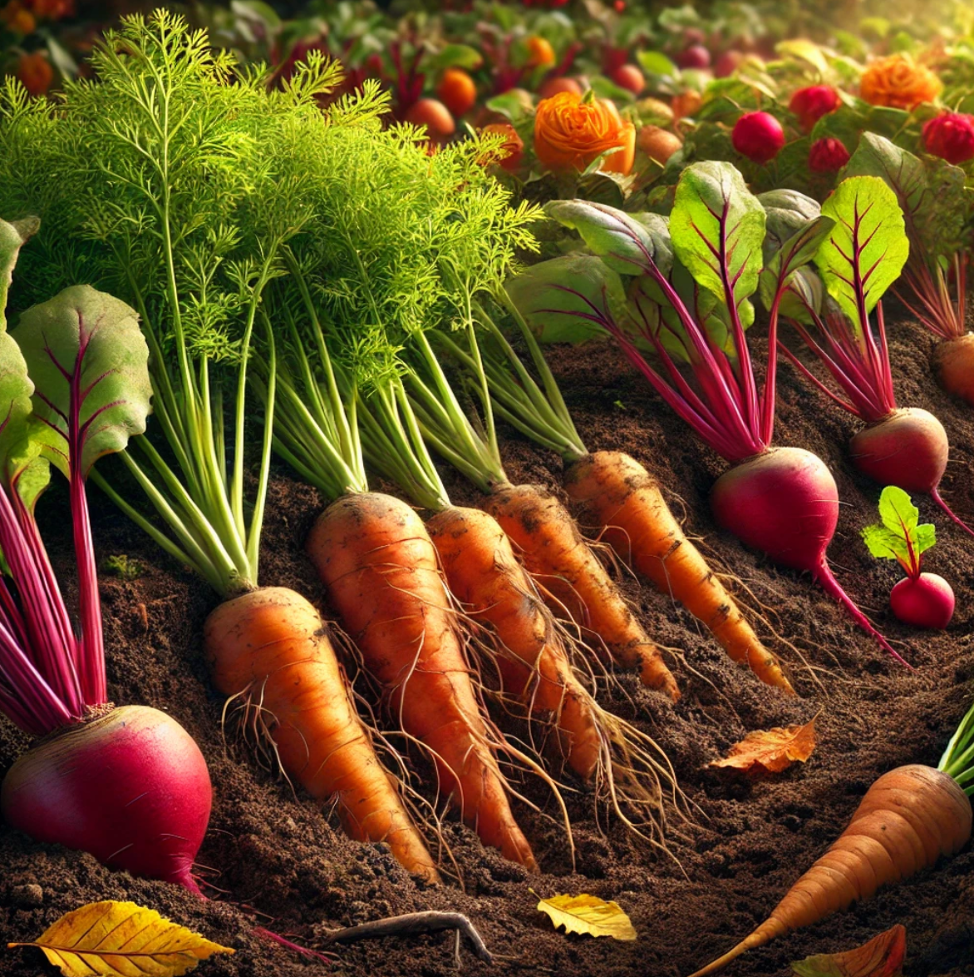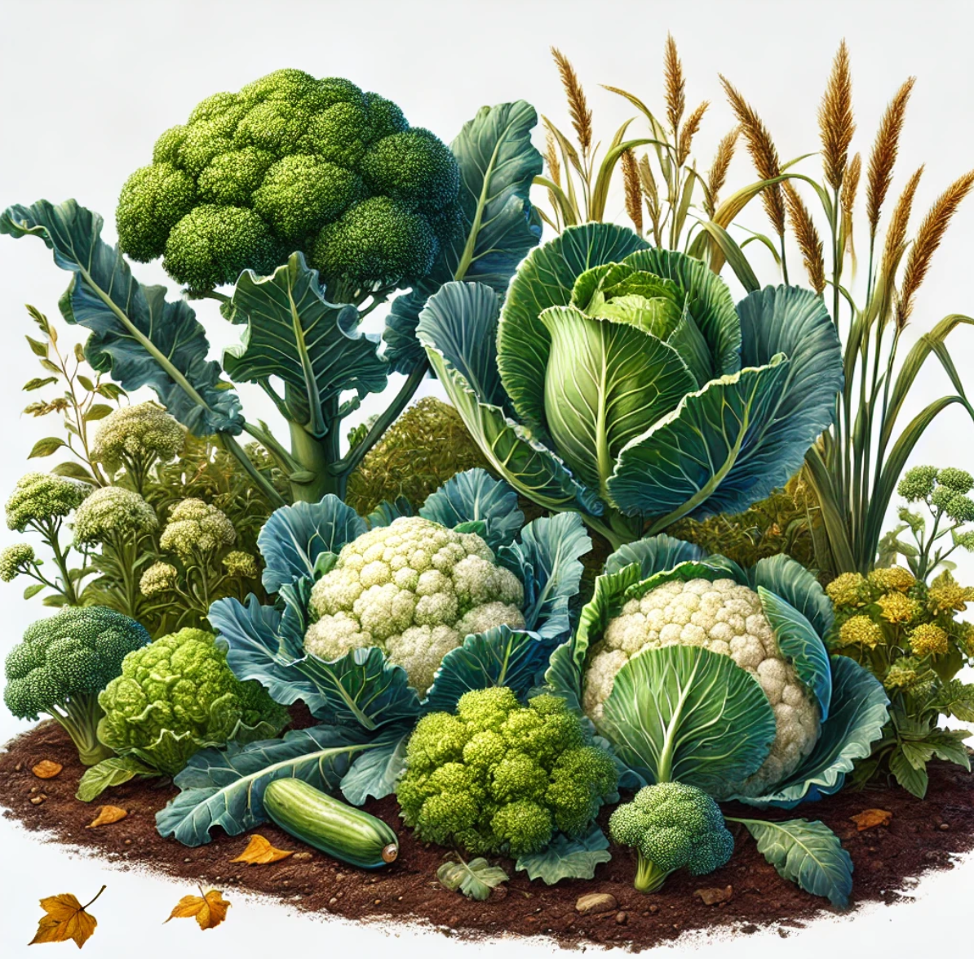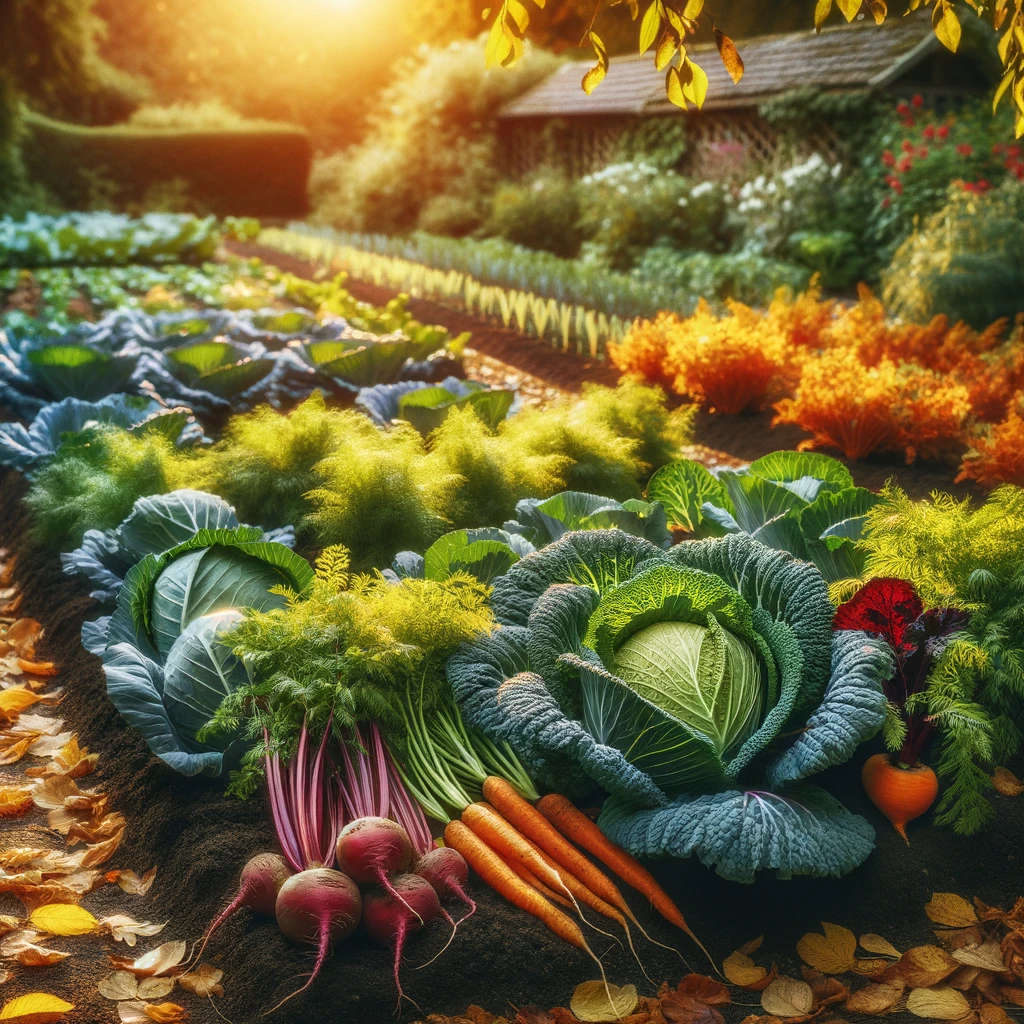As summer winds down and the days begin to cool, it’s time to start thinking about your fall garden. Fall is an excellent time to plant a variety of vegetables that thrive in cooler temperatures. These crops can provide you with fresh, homegrown produce well into the late fall and early winter. In this guide, tailored for American gardeners, we’ll explore the best fall vegetables to plant and offer tips on how to ensure a successful harvest.
1. Leafy Greens

Leafy greens are among the best vegetables to plant in the fall. They thrive in cooler temperatures and can often survive light frosts, making them perfect for autumn gardens.
- Spinach: Spinach is a fast-growing leafy green that can tolerate cold weather. Plant it in late summer or early fall, and you’ll have a steady supply of fresh leaves through the season.
- Kale: Kale is incredibly hardy and actually tastes sweeter after a frost. Plant it in early fall for a continuous harvest throughout the colder months.
- Lettuce: Lettuce varieties like Romaine, Butterhead, and Leaf lettuce are quick to grow and can be harvested as baby greens or allowed to mature.
2. Root Vegetables

Root vegetables are another excellent choice for fall planting. These crops develop underground and are well-suited to the cooler, more stable temperatures of autumn.
- Carrots: Carrots grow best in the cool, short days of fall. Plant them in late summer, and they’ll be ready to harvest before the ground freezes.
- Beets: Beets are a dual-purpose crop, providing both edible greens and tasty roots. They can be planted in late summer for a fall harvest.
- Radishes: Radishes are one of the quickest-growing fall vegetables. Some varieties can be ready to harvest in as little as 30 days, making them perfect for succession planting.
3. Brassicas

The Brassica family, which includes vegetables like broccoli, cauliflower, and cabbage, thrives in cooler weather. These crops are well-suited to fall planting and can produce a bountiful harvest before winter sets in.
- Broccoli: Broccoli is a cool-season crop that does best when planted in late summer for a fall harvest. It can tolerate light frosts and will continue producing until the first hard freeze.
- Cauliflower: Like broccoli, cauliflower prefers the cool temperatures of fall. Be sure to keep it well-watered, as it is more sensitive to stress.
- Cabbage: Cabbage is frost-tolerant and can be harvested late into the season. There are many varieties, including red, green, and Savoy cabbage, each with its own unique flavor.
4. Legumes

Legumes like peas and beans are a great addition to the fall garden. They fix nitrogen in the soil, which helps improve soil fertility for the next growing season.
- Peas: Snow peas and sugar snap peas are excellent fall crops. Plant them in late summer, and they’ll produce a sweet, crunchy harvest before the first frost.
- Bush Beans: While bush beans are typically a summer crop, some varieties can be planted in late summer for a fall harvest. Look for quick-maturing types that will produce before the weather gets too cold.
5. Garlic and Onions

Garlic and onions are unique in that they’re planted in the fall but harvested the following summer. These crops need a cold period to develop properly, making fall the ideal time to plant them.
- Garlic: Plant garlic cloves in the fall, about four to six weeks before the first hard frost. They’ll establish roots before winter and begin growing again in the spring, ready for harvest by early summer.
- Onions: Onions can be planted from sets in the fall for an early summer harvest. They require a cold period to bulb properly, so fall planting is essential.
6. Herbs
Certain herbs also thrive in the cooler temperatures of fall. Planting herbs in the fall can extend your harvest and provide fresh flavors for your kitchen well into the colder months.
- Cilantro: Cilantro prefers cooler weather and can be planted in late summer for a fall harvest. It’s perfect for adding fresh flavor to autumn dishes.
- Parsley: Parsley is a hardy herb that can survive light frosts. Plant it in the fall, and it will continue to produce leaves well into winter.
- Thyme: Thyme is a perennial herb that thrives in cool weather. Plant it in the fall, and it will continue to grow throughout the winter, especially in milder climates.
Tips for a Successful Fall Garden
- Start Seeds Indoors: For a head start on your fall garden, consider starting seeds indoors during the late summer. Transplant the seedlings outdoors once they’ve grown strong enough to handle the cooler weather.
- Extend the Season with Row Covers: Row covers can help protect your fall vegetables from early frosts, extending your growing season and ensuring a more abundant harvest.
- Water Regularly: Even though the temperatures are cooler, it’s important to keep your fall garden well-watered. The soil should remain consistently moist to support healthy plant growth.
- Watch for Pests: Some pests, like aphids and cabbage worms, can still be active in the fall. Regularly inspect your plants and take action if you notice any signs of pest damage.
Conclusion
Planting a fall garden is a great way to extend your growing season and enjoy fresh, homegrown produce well into the cooler months. By choosing the right vegetables and following these tips, you can ensure a successful fall harvest. Whether you’re a seasoned gardener or a beginner, fall gardening offers a rewarding opportunity to make the most of your garden space.

